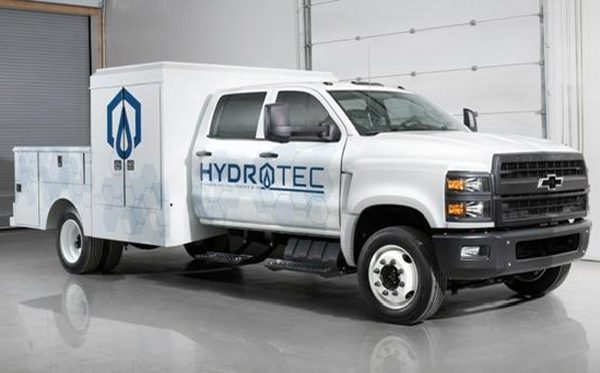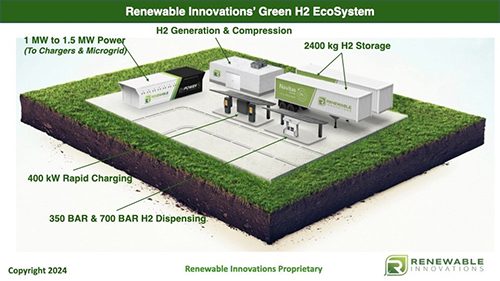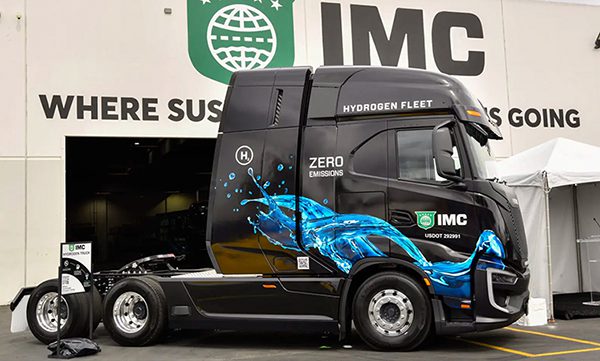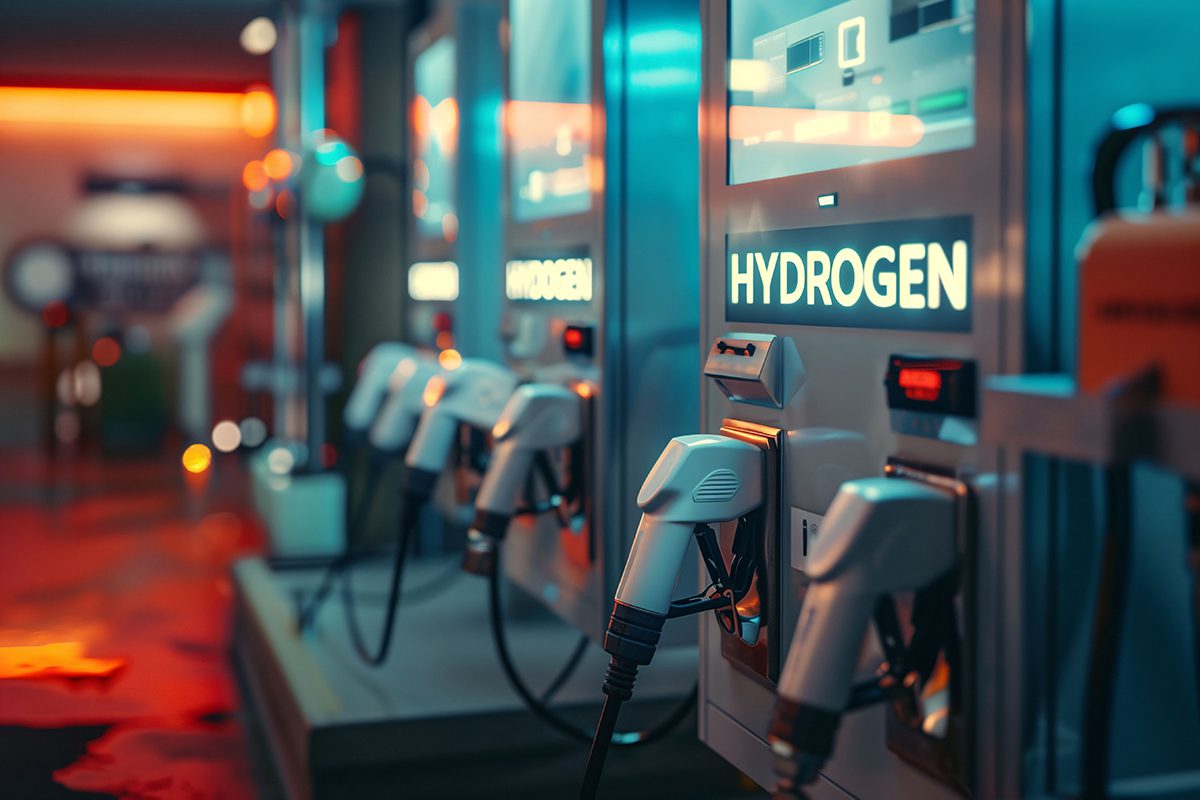Hydrogen is gaining significant momentum as a key tool to decarbonize the medium- and heavy-duty transit and freight sectors. In the U.S, dozens of fuel cell buses are already in operation in multiple states, as well as demonstration trials of fuel cell Class 8 drayage trucks and hydrogen fueling infrastructure underway at several of the country’s largest ports. Recent announcements from the federal government and members of the Fuel Cell & Hydrogen Energy Association (FCHEA) show that hydrogen fuel cell vehicles are hitting the road full steam ahead.
Last year, the U.S. Department of Energy (DOE) released the U.S. National Clean Hydrogen Strategy and Roadmap, which identified the strong value proposition hydrogen brings to the trucking sector, providing long driving range and quick refueling, benefits for long-distance routes and multi-shift operations. More recently, DOE and the U.S. Department of Transportation (DOT), via the Joint Office of Energy and Transportation, released the National Zero-Emission Freight Corridor Strategy. The document is a blueprint for the deployment of zero-emission medium- and heavy-duty vehicle (ZE-MHDV) charging and hydrogen fueling infrastructure needed to support battery-electric and hydrogen fuel cell electric trucks. This infrastructure is proposed to be sited along freight corridors, at intermodal freight facilities, and at high-usage ports, as well as connecting with existing projects and planned facilities, including the seven regional Hydrogen Hubs that DOE announced last October.
These agencies aren’t new to the realization of hydrogen’s potential to reduce carbon emissions in trucking and transit. DOE has launched several programs and initiatives in the past few years, including the Million Mile Fuel Cell Truck Consortium (M2FCT), the Super Truck program, and the 21st Century Truck Partnership (21CTP), and has funded numerous research, development, and deployment (RD&D) projects focusing on cost reduction, improving performance and durability, and fueling capacity in the medium- and heavy-duty sector.
The Low or No Emission Grant Program, operated by DOT, has supported fuel cell bus deployments in several states and currently has an open solicitation to further fund state and local efforts to buy or modernize buses and improve bus facilities.
In addition, DOE led testing and demonstration of fuel cell-powered delivery vans, baggage tow tractors at airports, and emergency rescue vehicles to show the full range of transit and logistics applications that could utilize this technology. Several of these projects are showing how these medium- and heavy-duty vehicles can also be used to provide electricity and emergency power. The H2Rescue project, in collaboration with the U.S. Department of Defense’s (DOD) U.S. Army Ground Vehicle Systems Center and the U.S. Army Corps of Engineers, as well as a fuel cell system from Accelera by Cummins, resulted in a hydrogen fuel cell/battery hybrid emergency relief truck that first responders and the military can drive to disaster mitigation sites. The truck can provide power, heat, and water for several days.

Image: GM
A recently announced DOE-supported pilot program involves General Motors (GM) and partners Southern Company and Nel ASA, developing a hydrogen-based, low-emissions worksite centered around GM’s HYDROTEC medium-duty trucks. The vehicles will be used by Southern Company at its worksites, and the companies will also demonstrate an integrated hydrogen microgrid at a Georgia Power (Southern Company subsidiary) power plant. The microgrid will incorporate a Nel ASA electrolyzer and GM’s HYDROTEC fuel cells, which will also be used to power electric vehicle charging stations.
DOE also announced $750 million in funding for 52 projects via the Clean Hydrogen Electrolysis, Manufacturing, and Recycling Program created in the Infrastructure Investment and Jobs Act (IIJA). Several awards went to FCHEA members to expand or construct new facilities, and for manufacturing processes to ramp up fuel cell stack and system production for the medium- and heavy-duty market sector.
This includes $30 million to Massachusetts-based Nuvera to develop a high-volume production process to manufacture its next-generation fuel cell stacks for the medium- and heavy-duty vehicles. These stacks have achieved DOE’s 2030 target for Class 8 trucks set by the M2FCT consortium. Nuvera’s fuel cells have also powered a Hyster® top-loading container handler operating in the Port of Los Angeles and a reachstacker at the Port of Valencia, Spain.
Another federal agency, the U.S. Environmental Protection Agency (EPA) has a $3 billion open funding opportunity to deploy hydrogen drayage trucks and zero-emissions equipment and infrastructure at ports and is expected announce another $1 billion for the Clean Heavy-Duty Vehicles program soon.
Renewable Innovations, based in Utah, participated in the beginning stages of DOE’s SuperTruck program, developing the concept for it its hydrogen electric vehicle (EV) charging system, the Green H2 Ecosystem. Now Renewable Innovations offers this complete, self-sustainable solution that can generate, store, and dispense hydrogen, as well as deliver power to both the utility grid and rapid chargers for EVs, including medium- and heavy-duty vehicles. The company is also working with Bluebird on hydrogen charging stations and grid energy buffers to encourage and support the deployment of EV school buses.

Image: Renewable Innovations
Elsewhere in the private sector, there have been other several exciting announcements from FCHEA members since the beginning of the year that will add many more medium- and heavy-duty fuel cell vehicles into operation around the country.
Nikola Motors wholesaled 35 of its Class 8 hydrogen fuel cell electric trucks in 2023, with seven additional trucks produced for field testing, customer demonstrations, and training purposes. The company recently announced the delivery of 20 fuel cell electric truck out of a 50-vehicle order to marine drayage company IMC. IMC is deploying these trucks in California, Nevada, and Arizona. Nikola is also working to expand the hydrogen infrastructure to fuel its trucks and recently celebrated the official opening of its new HYLA hydrogen station in Ontario, California.

Image: Nikola
Hyzon has 19 FCEVs deployed on three continents, including six in the U.S. Four of those FCEVs are being used in California by Performance Food Group. Hyzon is also working with New Way Trucks to develop a fuel cell-powered refuse vehicle with initial customer trials planned for the first half of 2024. Additionally, the company’s state-of-the-art fuel cell production facility in Bolingbrook, Illinois, is nearing start of production on the company’s groundbreaking single stack 200kW fuel cell system, which it launched in Australia last month in a heavy-duty commercial truck. Hyzon expects to deploy the system in the U.S. later this year. Finally, beyond heavy-duty trucks, Hyzon plans to expand to mining, construction, rail, marine, and airport ecosystems.
Ballard Power Systems, which received $40 million from DOE to fund its new gigafactory in Rockwall, Texas, currently reports 133 buses are already using its fuel cell system in operation in the U.S. The company just signed a long-term supply agreement with bus and coach manufacturer NFI Group, with the first purchase order of 100 FCmove-HD+ modules for buses planned for California, Nevada, New York, Ohio, Pennsylvania, and Canada.
The medium- and heavy-duty transport sector is a critical piece of the decarbonization puzzle, and many companies are involved along the full supply chain, including providing the equipment needed for the hydrogen fueling, storage, and distribution networks to support the fuel cell trucks, buses, passenger vehicles, and other vehicles that are hitting the road and working the ports. To keep tabs on the latest news and key players in this space, subscribe to the Fuel Cell & Hydrogen Energy Association’s free monthly newsletter, the Connection.


